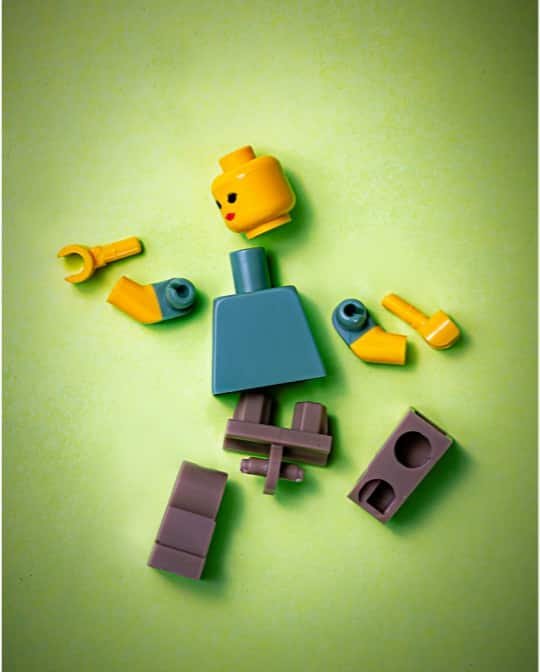
LORNA LIVINGSTON
TYPES OF ATTACHMENT
STYLES EXPLAINED
100% confidential counselling • safe space to talk • North Norfolk and Online
Lorna Livingston, attachment-based counsellor
What are attachment styles?
Attachment styles refer to the patterns of how people form and maintain emotional bonds with others, particularly in close relationships. Our type of attachment style is formed in early childhood, primarily through the parenting we receive, and shapes and influences our behaviours and ability to form relationships with others throughout our adult lives.
Attachment issues arise when the process of forming secure and healthy emotional bonds has been disrupted.
Attachment theory was first developed by British Psychologist John Bowlby in the 1950’s, and has been researched and developed extensively since its formation. Originally developed by Bowlby in the context of early childhood, attachment theory has since been extended to help us understand how adults form and maintain relationship throughout their lives.
Our early attachment experiences with primary caregivers shape our ability to form and maintain adult relationships. Therefore, by recognising and addressing attachment related issues, we can work towards more secure and healthy ways of relating to others which in turn will lead to more fulfilling relationships better emotional well-being.
What are the different attachment styles?
Secure attachment - individuals with secure attachment feel comfortable with intimacy and are generally warm and loving within relationships - they tend to have a positive view of themselves and others and naturally trust others. They are comfortable with closeness and independence.
Anxious / preoccupied - People with this attachment style often crave closeness, are highly sensitive and usually worry excessively about the relationship. They often struggle with abandonment fears and need constant reassurance. Read more→
Avoidance / Dismissive - People with this attachment style crave independence - they struggle with emotional intimacy and can appear detached and distant they often perceive others negatively and struggle becoming close to others.
Disorganised / Fearful-Avoidant - This attachment style combines anxious and avoidant styles, individuals seek closeness but suffer with a deep fear of being hurt. Often they give off mixed signals in relationships and tend to have chaotic and unpredictable relationships.
Common attachment issues
Attachment issues arise when the process of forming secure and healthy emotional bonds has been disrupted. Some examples of these are:
Separation anxiety - which is a feeling of intense distress or fear of being separated from a primary caregiver.
Trust issues - feeling unable to trust others, or even trust our own judgement of others.
Fear of abandonment - which is an intense and often overwhelming fear that our loved ones will leave or abandon us.
Emotional dysregulation - struggling to express emotions in a healthy way, often leading to anxiety and depression.
Attachment trauma - experiencing trauma in early attachment relationships, such as loss, or abuse can severely result in suffering overwhelming fear and difficulties in forming successful relationships later in life.
Attachment trauma is the psychological and emotional damage which occurs when an infant's early attachment needs have not been met. Attachment trauma is often the result of experiences such as loss, severe neglect or abuse or significant interruptions of parenting or caregiving in the early childhood years.
Attachment styles and parenting
Attachment styles are hugely significant in regards to our ability to successfully parent our children. A parents’ types of attachment style will affect how they respond to their child's needs, manage stress and help foster the emotional development of their child. Children of securely attached parents are more likely to develop a secure attachment style themselves securely attached parents typically have a positive view of themselves and others, they are comfortable with intimacy and autonomy and are generally emotionally stable parents.
With an anxious preoccupied attachment style, parents tend to be overly concerned with their child's feelings and needs and will often have a negative self view but a positive view of others. Children of anxious preoccupied parents may develop anxious attachment themselves and display clinginess, fear of abandonment, and struggle with independence.
Parents with the dismissive avoidant attachment style value independence and self-reliance they often have positive self view but a negative view of others and they can sometimes struggle with emotional closeness with their children. Children of dismissive avoidant parents may develop avoidant attachment themselves, in turn leading to difficulties forming close relationships, struggle with emotional closeness, and value emotional self-sufficiency.
Parents with fearful avoidant attachment style tend to desire closeness but are also deeply fearful of it which creates unpredictable and chaotic parenting for their infants. Children of fearful avoidant parents risk developing disorganised attachment leading to severe difficulties with trust emotional regulation and forming stable relationships.
Frequently asked questions
What is my attachment style?
Determining your attachment style involves self-reflection, assessment tools and sometimes professional guidance.
There are a few attachment style quizzes available to help you identify your attachment style. These quizzes aim to assess your behaviour, thoughts and feelings within relationships. The adult attachment scale (AAS) is probably the most well known.
Do I have attachment issues?
Determining whether you have attachment issues involves reflecting on your relationship patterns, types of attachment, your past experiences and your emotional responses. If you experience any of the following you may want to explore the possibility of having attachment issues. Difficulty with intimacy, avoidance of closeness, excessive need for reassurance, fear of abandonment, unregulated emotions, lack of trust in others and challenges in maintaining relationships.
Can you change your attachment style?
Attachment styles are deeply rooted in early experiences. It is possible to change your attachment style, as they are not fixed and can evolve but this takes significant conscious effort and time. The first step is to understand your current attachment style, realise how early experiences have shaped it, and form an understanding of any maladaptive patterns of behaviour.
Ready to reach out?
Now that you know more about attachment styles, tell me: what made you want to look up attachment styles, and what are you hoping to get out of it?






